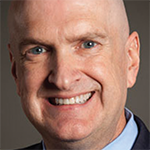
Image Credit: Michal Ludwiczak/shutterstock.com
A recent article in Health Affairs found that patients’ out-of-pocket (OOP) responsibility for office visits has gone up following implementation of the Affordable Care Act. The researchers found the sum of all copayments, coinsurance, and deductibles increased by 3% or more. Deductibles rose an average of between 7.9% and 9.5% for new and old patients, respectively (Health Affairs. 2015;34:1220-1224).
Explore This Issue
October 2015The rise in these types of expenses brings about a new concern for many practices: how to manage patients who aren’t able to pay.
“We are in a very different time,” said Rick Gundling, CMA, vice president of healthcare financial practices at the Healthcare Financial Management Association. “We talk a lot about the health exchanges having high deductibles, but even employer-based plans are increasing their deductibles to help manage costs.”
At one time, if a practice had to discuss financial concerns with a patient, it was only to tell him that he needed to come up with a $20 copay or a $100 deductible. Now, the entire payment for a procedure or other intervention may rest on the patient’s wallet. “These changes are making it harder for patients to get the care they need and for the practice to get paid for it,” said Owen J. Dahl, MBA, an independent consultant with the
Medical Group Management Association in Englewood, Colo. “This is becoming an issue that physicians and practice administrators seriously need to think about as part of their everyday practice.”
Develop Financial Responsibility Policies
As a practice begins to face some of these issues, it becomes increasingly incumbent on its members to develop a written policy focused on sitting down with patients very early in the process to make sure they understand all of the costs they are responsible for—not only those within the individual otolaryngology practice, but also any additional expenses such as lab work or expenses from hospital or outpatient surgery centers.
“I think practices need to be sensitive to the fact that this may be first time a patient has had their benefits explained to them instead of being some abstract idea on a website,” said Gundling. “They are told the out-of-pocket amount and immediately say that they have insurance. Well, yes, but they still have to pay their deductible and copayment amounts. That can be a shock.”
 Most otolaryngology practices are smaller and may not have either the financial or administrative structure to extend much credit in-house. The first question is, what can the practice afford to do to help out patients? —Richard Gundling, CMA
Most otolaryngology practices are smaller and may not have either the financial or administrative structure to extend much credit in-house. The first question is, what can the practice afford to do to help out patients? —Richard Gundling, CMAConfirming that the patient completely understands all of his or her expenses before treatment starts is best for the patient. No one wants to be surprised with an unexpectedly big bill. It is also good for the practice, because the patient experience is often better, and the practice is more likely to collect payment from a patient who knows what his obligations are.
Options for Payment
After the financial impact news is given, the practice needs to be able to offer suggestions on ways the patient can manage the outlays. “One of the easiest [ways to collect payment] is to offer a discount for cash,” said Dahl. “This helps the patient financially, the practice gets the money up front, and there are no collection costs.”
Some patients may choose to finance the balance themselves using avenues such as savings, loans from other family members, or equity they have in their home. For others, it may be as easy as presenting a consumer credit card.
If these options are not available for a patient, the physician may consider offering credit through the practice itself. “Most otolaryngology practices are smaller and may not have either the financial or administrative structure to extend much credit in-house,” said Gundling. “The first question is, what can the practice afford to do to help out patients?”
The answer to that will depend on the size and outlook of the practice as well as how much money is involved. Even the tiniest one- or two-person operation might be able to set up a payment plan for a $500 bill.
The decision depends in part on whether the practice has any desire to extend credit. Independent of the money involved in the loan, offices of any size may decide that they don’t want to invest the administrative time and resources needed to service these kinds of accounts.
Practices that decide to set up payment plans should only support loans that can be settled in three or fewer payments, said Dahl. “When you go to the fourth payment and beyond, you are subject to federal and state lending and credit acts. The administrative overhead and possible sanctions if things aren’t done properly may add too many unknowns to the mix,” he added.
A practice may also choose to turn the account over to an outside entity. The practice immediately gets paid a certain amount, and patients make arrangements to pay back the third party. Some companies specialize in lending money for healthcare through “medical credit cards.” Both Dahl and Gundling note that the practice’s bank often will offer these kinds of services.
Using an outside agency to extend credit to your patients not only frees up money and staff time but also can avoid negative feelings. It is a more business-like relationship, separated from the physician-patient relationship, if the patient has problems making payments.
Practices should also becomefamiliar with charitable foundations, or establish their own if the group is big enough. These organizations may be able to help defray costs associated with treatments for those who meet the foundations’ grant criteria.
No Single Plan for All
Both Dahl and Gundling also agree that no single plan is likely to be useful for all patients in a given practice. Offices should be prepared to offer many payment methods to more closely match the needs of the patient with available programs.
“Practices are facing the need to financially work around high deductibles and copayments,” said Dahl. “There are many patients in those circumstances today, and physicians, as well as their administrators, need to begin to look closely at these issues and develop responses.”
Kurt Ullman is a freelance medical writer based in New Jersey.
